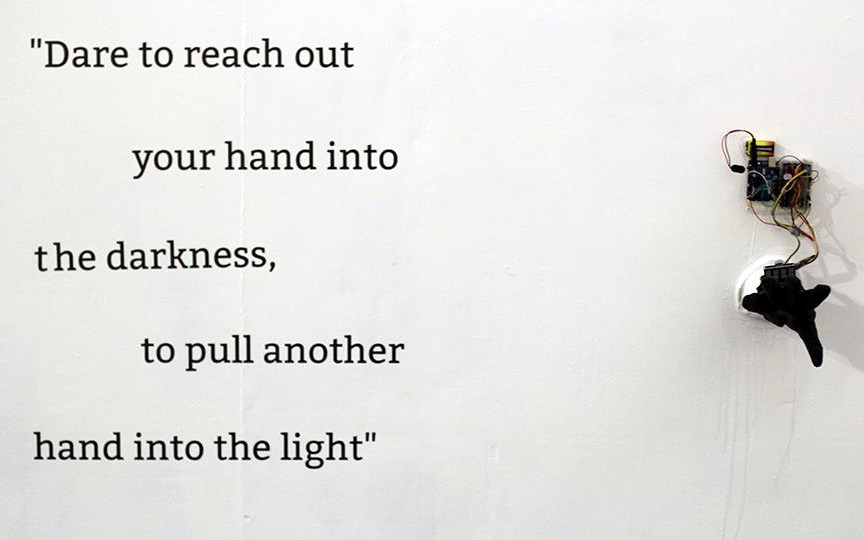Student’s high-tech smart glove translates sign language into text and speech
written by Sarah Cox
A ‘smart glove’ that translates sign language from hand gestures to visual text on a screen and audible dialogue has been developed by a Goldsmiths, University of London student. She's now working on an app to enable real-time translation of the text into other languages.
Designer and media artist Hadeel Ayoub, who has just completed her MA in Computational Arts from the Department of Computing, created the wireless SignLanguageGlove to improve communication between people with different disabilities. Earlier this year she won an Innovation and Entrepreneurship Prize for Saudi Students in the UK for an early glove prototype.
How does it work?
Her first experimental prototype translated sign language gestures into visual letters on a screen. The glove’s circuit comprised of flex sensors, an accelerometer, a microcontroller board, and a four digit graphic numerical display.
Five flex sensors were attached to the glove corresponding to the five fingers, detecting bends and curvatures then reporting the values to a serial monitor. An accelerometer was attached to detect the orientation of the hand.
Hadeel also developed a computer programme that identifies the output values of the sensors and accelerometer and matches them with a series of statements which determine what letters to display on a screen.
Her second prototype was better, faster and more durable, with smaller hardware and more efficient software. She incorporated a smaller microcontroller and smaller flex sensors and redesigned the software to allow text to scroll on a screen, deleting the old and adding the new.
The third and latest prototype – which now incorporates a text-to-speech chip - went on display at the Goldsmiths MA/MFA Computational Arts end-of-degree show earlier this month. Much of the glove’s hardware is now sewn into a lining:
“I didn’t want all the wires to intimidate users, making them feel the glove will be complicated to use or really fragile,” Hadeel explains.“People tend to lean to the cautious side when approached with new high-tech products which contradicts the main purpose of this glove, which is to help make lives easier.”
The next stage – multilingual and designed for kids:
Hadeel is already working on a fourth version that includes a smart phone and tablet app which can receive the glove’s output over WiFi.
As an Arabic, French and English speaker, she also intends to introduce a translation feature into the app, enabling text translation in real-time. Hadeel plans to improve the glove’s accuracy with the introduction of a motion sensor for better mapping, and also wants to develop a smaller version of the glove to fit children – a new challenge to minimise the hardware.
She’s been approached by several companies interested in taking the glove into production. The fourth prototype is expected to cost around £255 to produce but Hadeel hopes that if the glove is made available on the mass market, users with disabilities will not have to pay for it. Instead, schools and companies will purchase them for their employees, students and patients.
Hadeel says:
“I had one mission when I started this project and it was to facilitate communication between all kinds of disabilities, eliminating barriers between people who have a visual, hearing or speech impairment. The prototypes each have a new additional feature, an LED light, and a speaker for example, that took me one step closer to my goal.
“Once I’ve incorporated WiFi and translation features into it the glove will be useful for all – no exclusions as to who the user can reach, wherever, whoever, from any country at any time.”
visit Hadeel's blog for more information































































